
"Enemy to those who make him an enemy. Friend to those who have no friend."
|
Boston Blackie isn't afraid of stepping over onto the wrong side of the law. In fact, he's a former jewel thief and safe cracker who knows a lot about crime. But now he's reformed . . . and although he's saddled with a dim-witted sidekick, The Runt, and doggedly pursued by police Inspector Farraday, he always manages to pull himself out of whatever mess he's in at the end. |
Home Silent Movies 40's Movies Bio Chester Morris Television Radio Short Stories
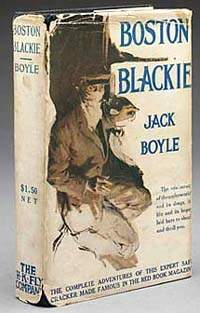 The original Boston Blackie story by Jack Boyle, "The Price of Principle," was written while he was in prison
under the penname 6066 and it was published July 1914 in American Magazine. The first story was quickly followed
by three more short stories in the same magazine. The penname 6066 was actually his prisioner number when he was
in the Canon City Penitentiary near Denver, Colorado. It has been said that Boyle wrote the first Blackie story in San
Quentin but this is not true.
He was released from San Quentin in 1911, three years before the first Blackie story. In San Quentin he was
prisioner 24700. Boyles only book was written in 1919. It was actually a compilation of a series of short
stories that appeared in Redbook magazine. Jack Boyle later published further Blackie tales in Cosmopolitan
magazine but only after the 1919 release of the hardcover collection.
The original Boston Blackie story by Jack Boyle, "The Price of Principle," was written while he was in prison
under the penname 6066 and it was published July 1914 in American Magazine. The first story was quickly followed
by three more short stories in the same magazine. The penname 6066 was actually his prisioner number when he was
in the Canon City Penitentiary near Denver, Colorado. It has been said that Boyle wrote the first Blackie story in San
Quentin but this is not true.
He was released from San Quentin in 1911, three years before the first Blackie story. In San Quentin he was
prisioner 24700. Boyles only book was written in 1919. It was actually a compilation of a series of short
stories that appeared in Redbook magazine. Jack Boyle later published further Blackie tales in Cosmopolitan
magazine but only after the 1919 release of the hardcover collection.
How did Boston Blackie get his name? Some suggest that the nickname "Blackie" sprang from the character’s family
surname, Black but Jack Boyle himself refutes this notion in the very first Boston Blackie tale, "The Price of
Principle." The introduction of the character reveals that his "piercing black eyes
and New England birthplace had won him his nickname." So Blackie’s creator expressly establishes that his colorful
nickname is derived from his commanding eyes, and not from a variation of his family name. While Jack Boyle provided
his criminal hero a surname relatively early in the series, it wasn’t until he penned his final story that he divulged
his full given name. On May 9, 1925, the Los Angeles Times published the seventh installment of Boyle’s serial "Daggers
of Jade." In it he presents us with "John Dawson, once known by the the police of every city from Maine
to California as Boston Blackie." This seems to be consistant with the name of his wife, Mary Dawson, "his best
loved pal," getaway driver, and collaborator on all his capers. This can be better understood when you realize that
the Mary in the Boston Blackie stories has an underworld crook for a father. The one thing Boston Blackie definitely isn't
is a P.I. It was only later, in film, radio, and eventually television, that he transformed into a private eye.
The movie characters all assumed the name "Boston Blackie" thinking that it was because his last name was
"Black." His full movie name was first revealed in the 1943 movie "After Midnight with Boston Blackie"
when he was paged by a porter on a train. The name the porter used was "Horatio Black." The movie Boston Blackie
is a young, handsome, well educated, gentleman that loves women and children. However, he is also a hardened criminal,
a jewel thief and safe cracker, that has served time in a California prison. Blackie gets into a dizzying array of tight
spots. He pulls off the gold bullion robbery of a lifetime, saves a friend from the gallows and escapes from prison.
In truth, the reality seems obvious. Horatio Black, "Boston Blackie," seems a more dashing name for a safecracker
than the workaday John Dawson. It’s not too surprising that Jack Boyle settled on the name John for his rogue hero.
After all, his own name was John Alexander Boyle.
As Frank D. Sherry says
in Twentieth Century Crime and Mystery Writers,
"Stylistically, the story is an interesting example of a hard-boiled
tale told before the hard-boiled style was born, and is flawed by a
sentimental ending typical of the times."
Silent Movies
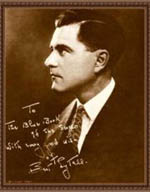 Boston Blackie made his first screen
appearance in the 1918 production of Boston Blackie's Little Pal
for Metro, This was the beginning of a string of silent movies for several
different studios. Blackie was played by different actors including Bert Lytell,
Lionel Barrymore, Raymond Glenn, David Powell, William Russell and
Forrest Stanley. In these films, Blackie was a professional thief with a
heart of gold. The last silent Blackie film was in 1927.
Boston Blackie made his first screen
appearance in the 1918 production of Boston Blackie's Little Pal
for Metro, This was the beginning of a string of silent movies for several
different studios. Blackie was played by different actors including Bert Lytell,
Lionel Barrymore, Raymond Glenn, David Powell, William Russell and
Forrest Stanley. In these films, Blackie was a professional thief with a
heart of gold. The last silent Blackie film was in 1927.
40's Movies
Boston Blackie
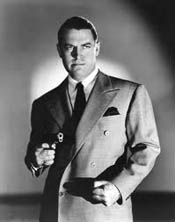 In 1941 Chester Morris starred in the
first of of a series of fourteen very sucessful Boston Blackie films for
Columbia Pictues, thus began new adventures of Boston
Blackie. The first movie Meet Boston Blackie sets Blackie up
as a former professional thief now working as a sort of freelance
adventurer/detective. Adventurer, yes. Detective, ???. On the right side
of the law, he preferred not to get too involved with the police
(did I just hear Jack Boyle roll over in his grave). Blackie is now
evolving into a new character that turns out to be very interesting and
entertaining. According to critic Leonard Maltin, Chester Morris provided
an amiable, charming hero in all episodes. Morris "brought to the role a delightful
offhand manner and sense of humor that kept the films fresh even when the
scripts weren't."
In 1941 Chester Morris starred in the
first of of a series of fourteen very sucessful Boston Blackie films for
Columbia Pictues, thus began new adventures of Boston
Blackie. The first movie Meet Boston Blackie sets Blackie up
as a former professional thief now working as a sort of freelance
adventurer/detective. Adventurer, yes. Detective, ???. On the right side
of the law, he preferred not to get too involved with the police
(did I just hear Jack Boyle roll over in his grave). Blackie is now
evolving into a new character that turns out to be very interesting and
entertaining. According to critic Leonard Maltin, Chester Morris provided
an amiable, charming hero in all episodes. Morris "brought to the role a delightful
offhand manner and sense of humor that kept the films fresh even when the
scripts weren't."
Radio
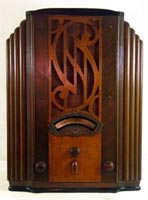 In 1944, Blackie made his radio debut on
NBC. This series was an outgrowth of the popular Boston Blackie movies.
Chester Morris and Richard Lane brought to the radio the characters of
Boston Blackie and Inspector Farraday. The series was originally a summer
replacement for The Amos and Andy Show. It was scheduled to
run from June 23, 1944 to September 15, 1944 for a total of thirteen
episodes. There is some disagreement on how many episodes actually aired.
The series turned out to be very popular and on April 15, 1945 it returned
to the air in its own time slot on NBC. This time the star was Richard
Kollmar who played Blackie for 220 episodes.
In 1944, Blackie made his radio debut on
NBC. This series was an outgrowth of the popular Boston Blackie movies.
Chester Morris and Richard Lane brought to the radio the characters of
Boston Blackie and Inspector Farraday. The series was originally a summer
replacement for The Amos and Andy Show. It was scheduled to
run from June 23, 1944 to September 15, 1944 for a total of thirteen
episodes. There is some disagreement on how many episodes actually aired.
The series turned out to be very popular and on April 15, 1945 it returned
to the air in its own time slot on NBC. This time the star was Richard
Kollmar who played Blackie for 220 episodes.
Television
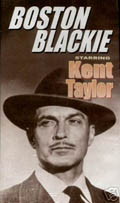 In 1951 Boston Blackie came to
television for a total of 58 30-minute episodes during its run that ended
in 1953. The TV version starred Kent Taylor as Boston Blackie.
Surprisingly 32 of the 58 Blackie episodes were filmed in color. This was
unheard of in the early 50's, however, the producers saw the future of
color was coming and also a new term, "reruns." When color TV
did arrive there was a huge demand for color programs. Boston
Blackie, Superman, The Cisco Kid,these were were among the few ready for
color.
In 1951 Boston Blackie came to
television for a total of 58 30-minute episodes during its run that ended
in 1953. The TV version starred Kent Taylor as Boston Blackie.
Surprisingly 32 of the 58 Blackie episodes were filmed in color. This was
unheard of in the early 50's, however, the producers saw the future of
color was coming and also a new term, "reruns." When color TV
did arrive there was a huge demand for color programs. Boston
Blackie, Superman, The Cisco Kid,these were were among the few ready for
color.
Short Stories
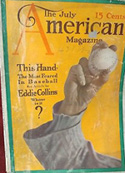 The first Boston Blackie short story was published in the American Magazine in 1914. It was
followed by more stories in RedBook magazine, Strand Magazine and Cosmopolitan. Jack Boyle
continued writing Boston Blackie stories until 1925 when the Los Angeles Times published the
seventh installment of Boyle’s serial Daggers of Jade.
The first Boston Blackie short story was published in the American Magazine in 1914. It was
followed by more stories in RedBook magazine, Strand Magazine and Cosmopolitan. Jack Boyle
continued writing Boston Blackie stories until 1925 when the Los Angeles Times published the
seventh installment of Boyle’s serial Daggers of Jade.
About This Site
There are many facets to Boston Blackie and this web site tries to cover them all, Movies, Radio and TV, the best we can. If you find any incorrect information on this site please let us know so we can correct it. If you have additional information that you want to share we would be happy to accept it. If you are a Boston Blackie buff and want to enhance any section of this web site we would be glad to have you.
This is just the beginning. I have a lot more information that I will be adding as time permits. Time is the enemy of all of us except Blackie; he is timeless.
Home Silent Movies 40's Movies Bio Chester Morris Television Radio Short Stories
Want to contact us? E-mail the Webmaster
www.bostonblackie.com